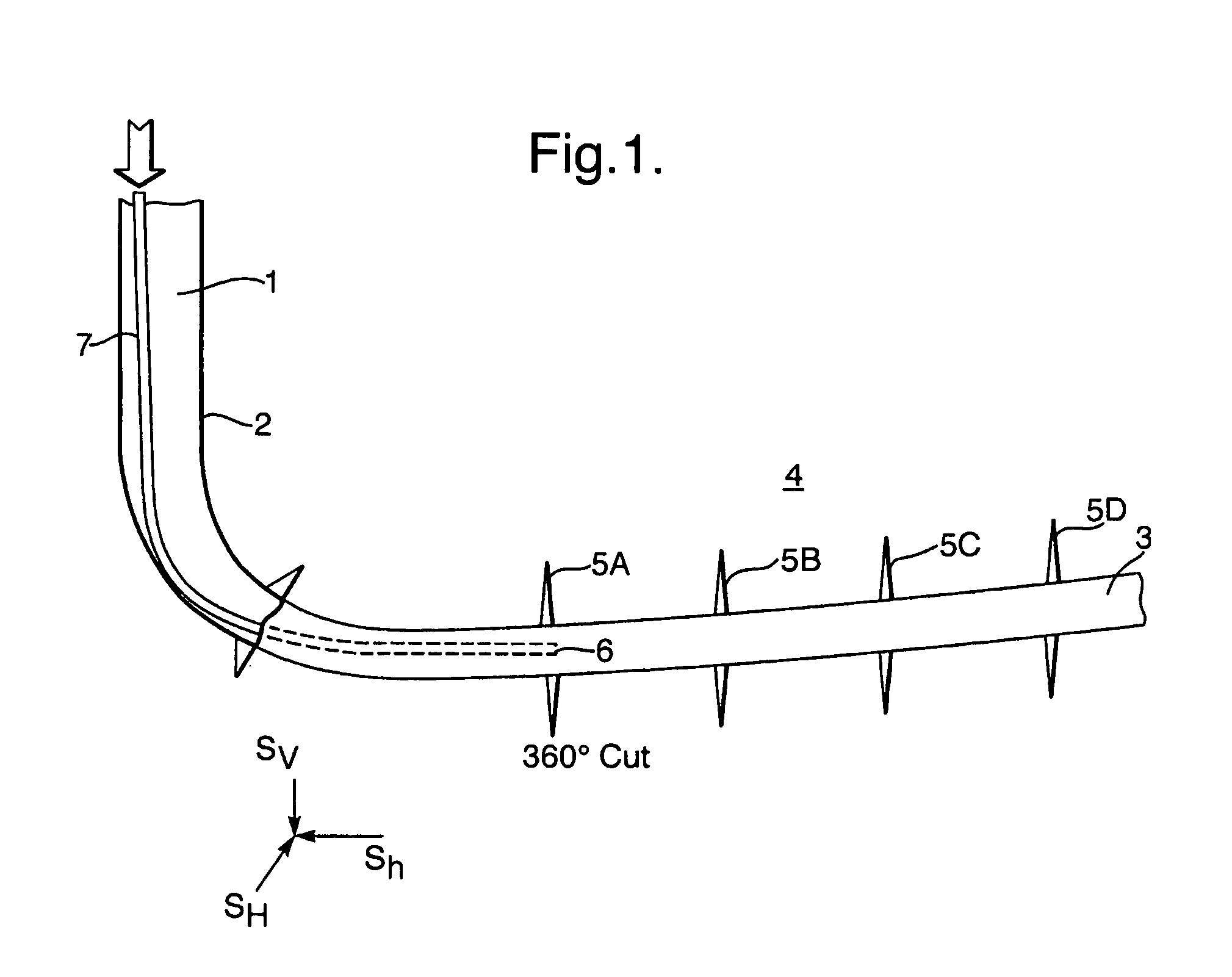Cyclic steam stimulation method with multiple fractures
a cyclic steam and fracture technology, applied in the direction of fluid removal, earthwork drilling and mining, borehole/well accessories, etc., can solve the problems of large parts of the formation unheated for an extended period, uncontrollable and inefficient heating of hydrocarbon formation, and significant lowering of oil production rate of the same well
- Summary
- Abstract
- Description
- Claims
- Application Information
AI Technical Summary
Benefits of technology
Problems solved by technology
Method used
Image
Examples
Embodiment Construction
[0029]FIG. 1 shows a well 1 with a substantially vertical upper section in which a well casing 2 is arranged and a substantially horizontal lower section 3 which penetrates a viscous oil containing formation 4 in which a series of five disk-shaped cavities 5A-D are being cut by a rotating jet cutting device 6.
[0030]The jet cutting device 6 is supported and rotated by a coiled tubing or drill string assembly 7, such that the rotating jet cutting device 6 is rotated about a longitudinal axis of the wellbore over at least 360 degrees to cut the disk-shaped cavity 5A in the formation surrounding the wellbore.
[0031]FIG. 1 also shows that the formation is subject to a three dimensional combination of minimum and maximum horizontal and vertical compressive stresses Sh, SH and Sv and that the trajectory of the lower well section 3 is oriented substantially along the trajectory of minimum compressive horizontal stress Sh.
[0032]FIG. 2 shows how steam is injected through a production tubing 7,...
PUM
 Login to View More
Login to View More Abstract
Description
Claims
Application Information
 Login to View More
Login to View More - R&D
- Intellectual Property
- Life Sciences
- Materials
- Tech Scout
- Unparalleled Data Quality
- Higher Quality Content
- 60% Fewer Hallucinations
Browse by: Latest US Patents, China's latest patents, Technical Efficacy Thesaurus, Application Domain, Technology Topic, Popular Technical Reports.
© 2025 PatSnap. All rights reserved.Legal|Privacy policy|Modern Slavery Act Transparency Statement|Sitemap|About US| Contact US: help@patsnap.com



